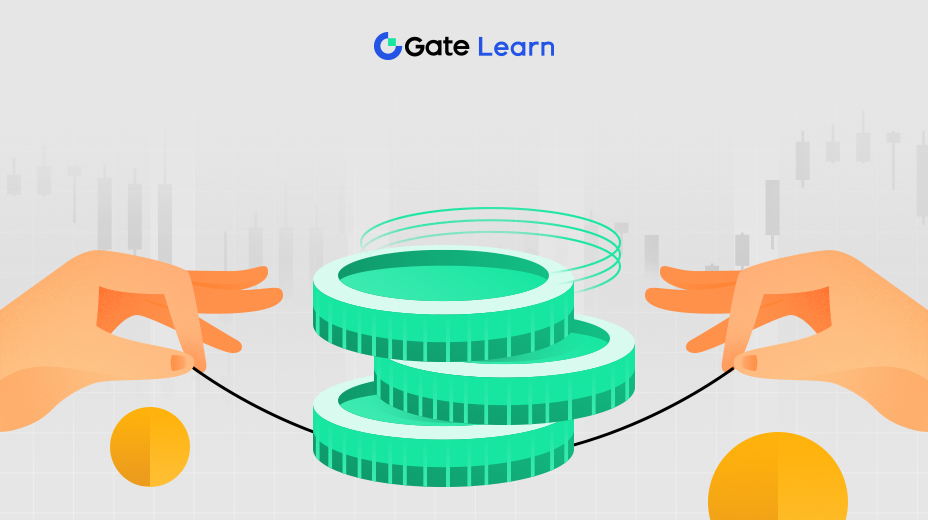Protocolo Vega (VEGA)
Bienvenido al Módulo 7, donde exploraremos el Protocolo Vega (VEGA), una plataforma descentralizada de negociación de derivados. Proporcionaremos una descripción general del Protocolo Vega y su papel para facilitar el comercio de derivados descentralizado. Este módulo cubrirá las características y funcionalidades del Protocolo Vega, incluido su enfoque en seguridad, escalabilidad e interfaces fáciles de usar. Además, examinaremos el token VEGA y su papel dentro del ecosistema Vega, así como también discutiremos los proyectos y desarrollos que contribuyen al crecimiento del ecosistema.
Vega Protocol (VEGA) es una plataforma de negociación de derivados descentralizada que se creó sobre Cosmos SDK. Su objetivo es proporcionar una infraestructura segura, abierta y accesible para negociar y crear derivados de forma descentralizada. Vega Protocol permite a los usuarios participar en una amplia gama de mercados financieros y acceder a diversos instrumentos derivados.
La plataforma Vega Protocol permite a los usuarios negociar una amplia gama de derivados. Estos derivados permiten a los usuarios especular sobre los movimientos de precios de los activos subyacentes, cubrir posiciones y gestionar la exposición al riesgo. Al aprovechar los beneficios de la descentralización, Vega Protocol proporciona un entorno comercial transparente y eficiente.
La plataforma está gobernada por una organización autónoma descentralizada (DAO) formada por poseedores de tokens VEGA. Los poseedores de tokens VEGA pueden proponer y votar decisiones importantes relacionadas con el desarrollo, las actualizaciones y los parámetros económicos de la plataforma. Esta estructura de gobernanza garantiza un enfoque democrático y participativo para la toma de decisiones dentro del ecosistema Vega.
Vega Protocol aprovecha el poder de los creadores de mercado automatizados (AMM) y los fondos de liquidez para proporcionar una gran liquidez para la negociación de derivados. Al incentivar a los proveedores de liquidez a través de tarifas y recompensas, la plataforma garantiza que los usuarios puedan ejecutar operaciones fácilmente y acceder a la liquidez sin problemas. Este mecanismo de incentivo de liquidez promueve un ecosistema comercial sólido y vibrante.
El enfoque del protocolo en la descentralización y la seguridad se ejemplifica mediante el uso de técnicas criptográficas y de computación segura fuera de la cadena. Vega Protocol emplea un diseño único llamado "red de nodos", donde los creadores de mercado, validadores y participantes contribuyen colectivamente a la ejecución y validación de las operaciones. Esta arquitectura distribuida mejora la seguridad, reduce el riesgo de manipulación y garantiza la integridad del proceso comercial.
La arquitectura del Protocolo Vega incorpora dos optimizaciones comerciales principales, una de las cuales gira en torno a las tarifas de transacción. La red principal de Vega facilita el comercio continuo a través de un Libro de órdenes de límite central (CLOB) en cadena, o un diseño híbrido que integra un Creador de mercado automatizado (AMM) y un CLOB.
A diferencia de las cadenas de bloques típicas que imponen tarifas basadas en la potencia computacional requerida para procesar una transacción, Vega incentiva las órdenes limitadas al no cobrar tarifas por la colocación de órdenes en su cadena. Las tarifas sólo se aplican cuando se ejecutan las órdenes. Para disuadir la realización de pedidos excesivos o el "spam", Vega introduce un mecanismo de prueba de trabajo del lado del cliente para las transacciones. Como resultado, si un usuario comienza a insertar más pedidos en un bloque, la aceptación de la transacción en el mempool se vuelve cada vez más exigente en términos del esfuerzo de prueba de trabajo requerido.
El token VEGA (VEGA) sirve como token de utilidad nativo de la plataforma del Protocolo Vega. Los poseedores de tokens pueden apostar sus tokens VEGA para participar en la gobernanza y ganar recompensas. La utilidad del token alinea los intereses de los poseedores del token con el éxito y el crecimiento del ecosistema Vega.
La interfaz fácil de usar y las herramientas para desarrolladores de Vega Protocol permiten a los comerciantes y desarrolladores crear e implementar fácilmente nuevos productos derivados en la plataforma. Esta flexibilidad fomenta la innovación y amplía la gama de derivados disponibles, permitiendo a los usuarios acceder a un conjunto más amplio de oportunidades comerciales. Vega Protocol tiene como objetivo convertirse en un centro para el comercio de derivados descentralizado, respaldando instrumentos financieros tanto tradicionales como novedosos.
La plataforma también enfatiza el cumplimiento regulatorio y apunta a operar dentro de los marcos legales de las jurisdicciones a las que presta servicios. Al cumplir con los requisitos reglamentarios, Vega Protocol busca generar confianza entre los usuarios, las instituciones financieras y las autoridades reguladoras. Este enfoque mejora la credibilidad y la viabilidad a largo plazo de la plataforma en el cambiante panorama regulatorio.
Características y funcionalidades del Protocolo Vega
Vega Protocol ofrece una gama de características y funcionalidades que contribuyen a su plataforma de negociación de derivados descentralizada.
Negociación descentralizada de derivados: el protocolo Vega permite a los usuarios negociar una amplia gama de derivados, incluidas opciones, futuros y swaps. La plataforma proporciona un mercado descentralizado donde los usuarios pueden acceder a diversos mercados financieros y participar en actividades comerciales sin depender de intermediarios.
Gobernanza comunitaria: el Protocolo Vega se rige por una organización autónoma descentralizada (DAO) compuesta por poseedores de tokens VEGA. Esta estructura de gobernanza impulsada por la comunidad permite a los poseedores de tokens proponer y votar sobre actualizaciones de la plataforma, parámetros económicos y otras decisiones importantes. La gobernanza comunitaria garantiza la transparencia, la inclusión y la toma de decisiones colectiva dentro del ecosistema Vega.
Computación segura fuera de la cadena: Vega Protocol emplea técnicas de computación segura fuera de la cadena para manejar cálculos complejos fuera de la cadena de bloques Ethereum, mejorando así la escalabilidad y reduciendo los costos de transacción. Este enfoque permite procesos eficientes de igualación de órdenes, gestión de riesgos y liquidación, mejorando la experiencia comercial general.
Red de nodos: Vega Protocol opera en una red distribuida de nodos que consta de creadores de mercado, validadores y participantes. Estos nodos contribuyen colectivamente a la ejecución y validación del comercio. La arquitectura descentralizada mejora la seguridad, evita puntos únicos de falla y facilita el comercio sin confianza y a prueba de manipulaciones.
Interfaz fácil de usar y herramientas de desarrollo: Vega Protocol proporciona interfaces fáciles de usar y herramientas de desarrollador que simplifican la creación y la implementación de nuevos productos derivados. Los comerciantes y desarrolladores pueden diseñar y personalizar fácilmente contratos de derivados, adaptándolos a sus estrategias comerciales específicas y requisitos del mercado. Las herramientas de desarrollo de la plataforma permiten la creación de instrumentos financieros innovadores, fomentando la creatividad y ampliando la gama de opciones comerciales disponibles.
Cumplimiento regulatorio: Vega Protocol prioriza el cumplimiento regulatorio y apunta a operar dentro de los marcos legales de las jurisdicciones a las que presta servicios. Al cumplir con los requisitos regulatorios, la plataforma tiene como objetivo generar confianza y establecer asociaciones con instituciones financieras tradicionales, reguladores y otras partes interesadas. El cumplimiento normativo mejora la credibilidad de la plataforma y allana el camino para una adopción más amplia del comercio de derivados descentralizado.
Transparente y auditable: Vega Protocol promueve la transparencia y la auditabilidad mediante el uso de la tecnología blockchain. Todas las operaciones y transacciones ejecutadas en la plataforma se registran en la cadena de bloques Ethereum, lo que permite el escrutinio y la verificación públicos. Esta transparencia fomenta la confianza entre los usuarios y garantiza la integridad del proceso comercial.
Ficha VEGA
El token VEGA (VEGA) sirve como token de utilidad nativo dentro del ecosistema Vega y desempeña un papel vital en la funcionalidad, la gobernanza y los incentivos de la plataforma.
Gobernanza y votación: los poseedores de tokens VEGA tienen el poder de participar en la gobernanza de la plataforma Vega. Tener tokens VEGA otorga a los usuarios derechos de voto, lo que les permite proponer y votar decisiones importantes relacionadas con el desarrollo, las actualizaciones y los parámetros económicos de la plataforma. Esta estructura de gobernanza descentralizada garantiza que la comunidad Vega tenga voz y voto en la configuración de la dirección futura del ecosistema.
Apuesta y validación: los poseedores de tokens VEGA pueden apostar sus tokens para convertirse en validadores dentro de la red Vega. Los validadores desempeñan un papel crucial en la validación de transacciones, la seguridad de la red y el mantenimiento del consenso. Al apostar sus tokens VEGA, los usuarios contribuyen a la seguridad y estabilidad generales de la plataforma y, al mismo tiempo, obtienen recompensas por su participación.
Incentivos de red: los tokens VEGA se utilizan para incentivar a los participantes de la red, incluidos validadores y proveedores de liquidez. Los validadores son recompensados con tokens VEGA por sus esfuerzos computacionales para validar transacciones y mantener la integridad de la red. Los proveedores de liquidez que contribuyen a los fondos de liquidez también reciben incentivos con tokens VEGA, lo que garantiza un entorno de negociación de derivados vibrante y líquido.
Captura de valor: a medida que el ecosistema Vega crece y gana adopción, la demanda de tokens VEGA puede aumentar. Los poseedores de tokens VEGA tienen el potencial de beneficiarse de la apreciación del valor del token a medida que se expande el uso y la utilidad de la plataforma. El suministro limitado de tokens VEGA contribuye a la acumulación de valor potencial, creando un incentivo para que los poseedores de tokens participen y apoyen el crecimiento del ecosistema.
Seguridad de la red: los tokens VEGA desempeñan un papel crucial en el mantenimiento de la seguridad de la red Vega. El mecanismo de consenso de Prueba de participación se basa en que los poseedores de tokens apuesten sus tokens VEGA para convertirse en validadores. Esto incentiva a los participantes a actuar con honestidad y garantiza la integridad y resistencia de la red contra actividades maliciosas.
Liquidez y comercio: los tokens VEGA se pueden negociar en intercambios descentralizados, lo que permite a los usuarios acceder a liquidez y participar en actividades comerciales. La disponibilidad de tokens VEGA en el mercado contribuye a la liquidez general del token, haciéndolo fácilmente negociable y permitiendo a los usuarios entrar o salir de posiciones cómodamente.
Crecimiento y desarrollo del ecosistema: el token VEGA es fundamental para impulsar el crecimiento y el desarrollo del ecosistema Vega. A medida que el ecosistema se expande, los tokens VEGA facilitan la gobernanza, incentivan la participación y respaldan las operaciones de la red. La utilidad del token alinea los intereses de los poseedores del token con el éxito y la sostenibilidad del ecosistema Vega.
Reflejos
- Vega es una cadena de bloques soberana de capa 1 construida con Cosmos SDK.
- Los poseedores de tokens VEGA participan activamente en la gobernanza de la plataforma, proponiendo y votando decisiones importantes.
- Vega Protocol es una plataforma de negociación de derivados totalmente descentralizada que presenta un Libro de órdenes de límite central (CLOB) y un sistema Automated Market Maker (AMM), que incentiva la provisión de liquidez y permite funciones como negociación sin custodia, tarifas bajas y creación de mercado sin permiso.
- El Protocolo Vega hace hincapié en la computación segura fuera de la cadena, una red de nodos e interfaces fáciles de usar para mejorar la seguridad, la escalabilidad y la usabilidad dentro del ecosistema.





